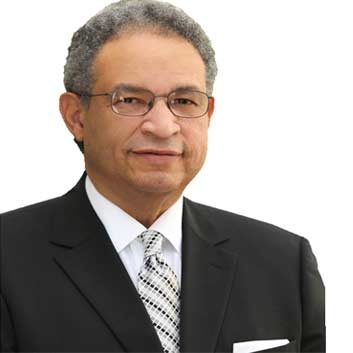Los Angeles Tourism & Convention Board
President and CEO
Hometown: New York
College: Thomas Edison State College, Trenton, New York
"We are a critical component of driving economic activity to the city."
It’s one thing to have the mayor of Los Angeles’ phone number on your cellphone. It’s quite another when he has yours—and uses it. Frequently.
But it all makes sense when you happen to be the president and CEO of Los Angeles Tourism & Convention Board and the mayor is Eric Garcetti, who has made tourism his top priority.
“We work very closely with the mayor’s office,” says Ernest Wooden Jr., who joined L.A. Tourism two years ago and has been steamrolling ever since. “We are a critical component of driving economic activity to the city and the mayor is quite frankly the best tourism mayor in the country. He gets it, and he believes in it.
“We are doing everything we can to grow tourism for the city of Los Angeles.”
Anyone who doesn’t understand just how important tourism is to the region need only look at the numbers.
L.A.’s tourism industry employed nearly half a million people in 2014, according to the California Employment Development Department. That represents one out of every nine jobs countywide, Wooden says. And to drive home the point, Wooden cites another statistic:
In 2013 (the most recent figures available), visitors spent $18.4 billion in the local economy. That’s about the same amount of money as the combined state budgets of Idaho, Iowa and Vermont.
That cash tells only part of the story. “To understand the impact you’ve got to follow the money,” Wooden says. “As a practical matter, you’ve got to multiply that factor by about two, which means that tourists generated almost $35 billion of economic lift to the city and county of Los Angeles.
“These are substantive numbers.”
For every additional 250 visitors to Los Angeles, a new job is created, according to Wooden’s office.
There are more numbers, but the point is pretty clear, says Wooden, who spent nearly a decade working for Hilton Hotels: “Tourism is an incredibly important economic engine,” he says.
In 2014, the county broke all previous records, with 43.4 million visitors. And Wooden has plans for that number to grow; his office’s goal is to draw 50 million people a year to the county by 2020.
“Every indication is that we are on our way to getting there,” he says.
The way to get there may not seem so obvious to all. L.A. has always been a tourist draw, as the heart and soul of the entertainment industry. And like the rest of the country, L.A. tourism benefitted from the generally improved economy, Wooden says.
But it takes more than celebrities and cash to draw visitors.
Business and political leaders have been working on improvements that Wooden is confident will help the “City of Angels.” That includes beefing up its public transportation system, including buses and subways, and expanding the international terminal at Los Angeles International Airport.
“We’ve been able to accelerate Los Angeles’ rise in ways that our top competitors in the top 25 markets in the United States have not,” he says “Our ability to grow the international visitor, being a primary gateway into the enormously active Pacific Rim—particularly China—has really helped us in significant and measurable ways,” he says.
Los Angeles doesn’t take those visitors for granted. Along with expanding the airport, the county markets directly to Asia. In addition, L.A. is busily spreading the word that it has become a high-technology hub, with several Internet and technology companies establishing headquarters there.
“We’re becoming a little bit of Silicon Valley down here,” he says, pointing to the mayor’s slated appearance at the popular technology conference, South by Southwest (SXSW), in Austin, Texas.
L.A. also is increasing its draw with its relatively new entertainment complex known as L.A. Live, which features Staples Center, Nokia Theatre, hotels, restaurants, nightclubs, shops and, of course, Los Angeles Convention Center, with 867,000 sq. ft. of exhibition and meeting space.
“It’s like our Times Square in Los Angeles,” Wooden says. “It’s a magnet.”
“Over $4 billion has been invested in downtown L.A.,” he says.
That includes the convention center itself, which has already undergone some needed improvements. Recently, it spent $10 million on new carpeting, air conditioning and technology.
That’s just the beginning, Wooden says.
“In the next couple of months we’re going to announce a major renovation, modernization and futurization,” says Wooden.
That word, “futurization?” That’s intentional. “They use the word futurization deliberately,” he says of convention center staff. This is because their task is to understand what will draw convention-goers not just now, but 20 years from now, such as translation booths.
Wooden has grown accustomed to working in a political milieu where he’s responsible to everyone from the mayor to county supervisors.
“Inspiring people to a common goal—and I think we’ve come a long way in our common goal to get to 50 million—tests all your skills of persuasion and your ability to inspire people to a common goal for the benefit of the city, he says.”




